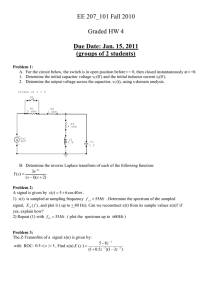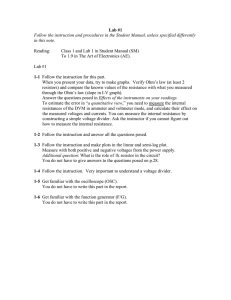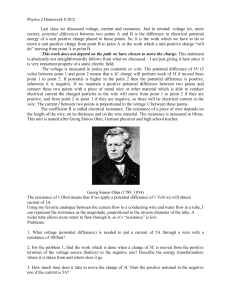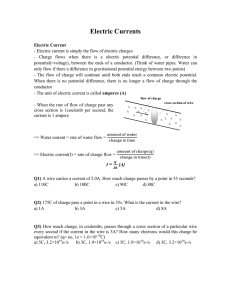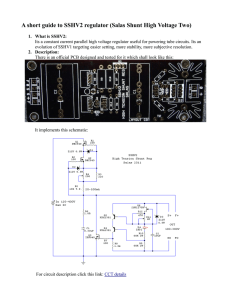Ohms Law_14to16_Student_Revision_Notes
advertisement
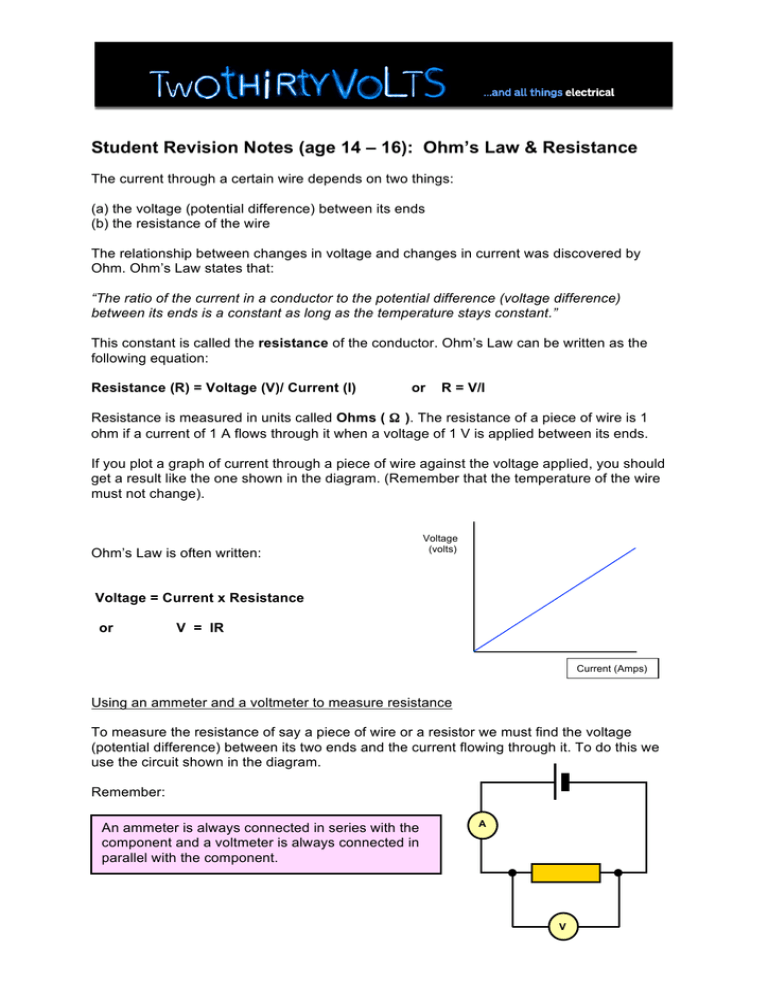
Student Revision Notes (age 14 – 16): Ohm’s Law & Resistance The current through a certain wire depends on two things: (a) the voltage (potential difference) between its ends (b) the resistance of the wire The relationship between changes in voltage and changes in current was discovered by Ohm. Ohm’s Law states that: “The ratio of the current in a conductor to the potential difference (voltage difference) between its ends is a constant as long as the temperature stays constant.” This constant is called the resistance of the conductor. Ohm’s Law can be written as the following equation: Resistance (R) = Voltage (V)/ Current (I) or R = V/I Resistance is measured in units called Ohms ( Ω ). The resistance of a piece of wire is 1 ohm if a current of 1 A flows through it when a voltage of 1 V is applied between its ends. If you plot a graph of current through a piece of wire against the voltage applied, you should get a result like the one shown in the diagram. (Remember that the temperature of the wire must not change). Ohm’s Law is often written: Voltage (volts) Voltage = Current x Resistance or V = IR Current (Amps) Using an ammeter and a voltmeter to measure resistance To measure the resistance of say a piece of wire or a resistor we must find the voltage (potential difference) between its two ends and the current flowing through it. To do this we use the circuit shown in the diagram. Remember: An ammeter is always connected in series with the component and a voltmeter is always connected in parallel with the component. A V Linked Resources www.twothirtyvolts.org: Ohm’s Law & Resistance (14-16) Student Quiz


